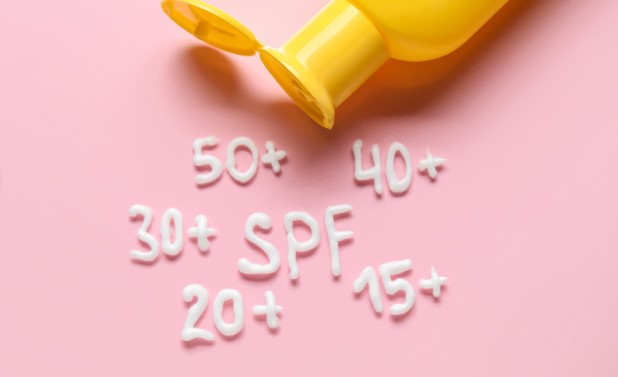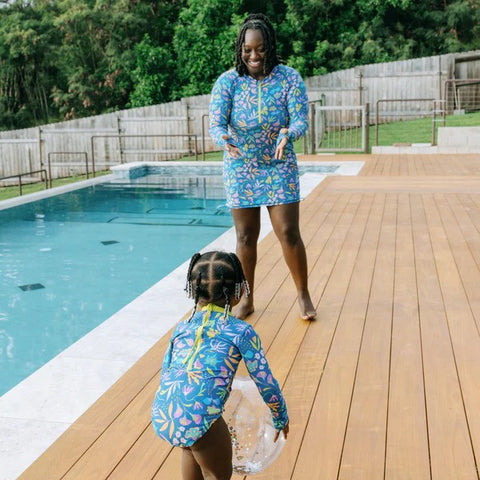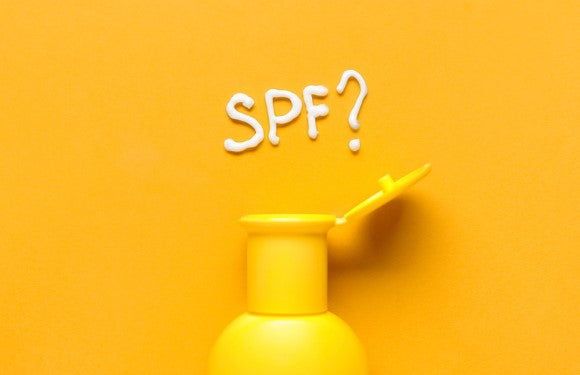
SPF 30 vs. 50: what’s the difference?
The main difference between SPF 30 and SPF 50 sunscreen lies in the level and duration of sun protection provided. SPF 30 blocks around 97% of UV rays, while that number sits at about 98% for SPF 50.
There are plenty of misconceptions, but in reality, the differences are fairly minimal. Sunscreens with an SPF of 30 or more are considered highly effective for protecting your skin from harmful UV rays. The choice will depend on things like skin type, sensitivity, and personal preference.
Quick links:
We will highlight the differences between SPF 30 and 50, and teach you how to choose the right sun protection factor for your skin.
What is SPF?
Sun protection factor (SPF) measures how well a sunscreen protects skin from UVB rays, the type of radiation that causes sunburn, and sun poisoning, and can contribute to skin cancer. SPF is calculated by comparing the amount of time needed to burn skin that's been treated with sunscreen to the amount of time needed to burn untreated skin.
Here's how it works: if it takes 20 minutes for unprotected skin to start turning red, using an SPF 30 sunscreen theoretically prevents reddening 30 times longer—about 10 hours. But, this calculation is done in a lab setting with controlled conditions. In real life, factors such as sweat, skin oil, and uneven application decrease sunscreen's effectiveness. No matter the SPF, sunscreen should be reapplied every two hours for optimal protection.
Note: SPF only measures protection against UVB radiation. It doesn't indicate protection from UVA rays, another type of radiation that penetrates deeper into the skin and can also cause damage. To protect against both types of UV radiation, look for a broad-spectrum sunscreen.
Key differences between SPF 30 and SPF 50
The main difference between SPF 30 and SPF 50 lies in the extent and duration of the UVB protection they offer. While SPF 30 filters out about 97% of UVB rays, SPF 50 provides slightly more protection by blocking approximately 98%.
To understand the duration of protection offered by an SPF 30 sunscreen, think of it this way: if your unprotected skin typically burns after 10 minutes of sun exposure, applying a sunscreen with SPF 30 would theoretically allow you to stay in the sun for up to 300 minutes (or 30 times longer) without burning.
An SPF 50 sunscreen would enable you to extend your sun exposure to roughly 500 minutes before burning, assuming you have applied it correctly.
The table below highlights the main differences between SPF 30 and SPF 50 sunscreens:
|
Feature |
SPF 30 |
SPF 50 |
|
UVB rays blocked |
97% |
98% |
|
Sun exposure time before burning (theoretical) |
300 minutes (5 hours) |
500 minutes (8 hours 20 minutes) |
|
Suitability for skin types |
Suitable for most skin types |
Best suited for fair or sensitive skin |
|
Dermatologist recommendation |
Recommended for daily use and outdoor activities |
Recommended for prolonged sun exposure or very fair skin |
While SPF 30 and SPF 50 sunscreens offer different levels of UVB protection, they share some common ground:
- Amount needed. Both require about 1 ounce (enough to fill a shot glass) of sunscreen to cover the entire body for optimal protection.
- Reapplication. Regardless of the SPF level, you have to reapply sunscreen every 2 hours or immediately after swimming, sweating heavily, or towel-drying to maintain adequate protection.
- Protection against UVA rays. Both SPF 30 and SPF 50 sunscreens can provide broad-spectrum protection if the formula includes ingredients that shield against UVA rays.
- Texture and feel. The texture and feel of sunscreens can be different. There are different types of sunscreen, such as lotion, spray, or gel, but these differences are not inherently linked to the SPF level.
How to choose the right SPF
Here are some factors to consider when choosing between SPF 30 and 50:
- Skin type. If you have fair or sensitive skin that burns easily, SPF 50 may be a better choice for extra protection.
- Time spent outdoors. If you plan to spend extended periods in the sun, such as during a beach vacation or outdoor sports, SPF 50 can provide longer-lasting protection.
- Intensity of sun exposure. If you're in a location with a high UV index or at a higher altitude, where UV rays are stronger, SPF 50 may be more suitable.
- Personal preference. Some people may prefer the peace of mind that comes with using a higher SPF, even if the additional protection is minimal.
- Skin cancer risk factors. If you have skin cancer risk factors, your dermatologist may recommend using SPF 50 for added protection.
Tips for sunscreen use
Follow these tips to use sunscreen effectively:
- Use about 1 ounce (enough to fill a shot glass) of sunscreen to cover your entire body. Most people don't apply enough, which can lead to reduced protection.
- Apply sunscreen 15-30 minutes before sun exposure to allow the product to absorb into your skin and form a protective barrier.
- Remember to apply sunscreen to your ears, nose, lips, back of the neck, hands, and the tops of your feet.
- Reapply sunscreen every 2 hours, or more frequently if you're swimming, sweating heavily, or towel-drying. Water-resistant sunscreens can protect for 40-80 minutes while wet, but they still need to be reapplied regularly.
- UV rays can penetrate clouds, so you should use sunscreen even when it's overcast.
Other sun protection measures
Sunscreen is one of the best ways to protect your skin from sun damage, but you shouldn't always rely solely on SPF to keep you safe from UV radiation. Other sun protection measures can be combined with sunscreen for extra protection:
- UPF 50+ clothing and swimwear
- Sun-protective accessories
- Seek shade
- Plan according to the UV index
UPF 50+ clothing
Ultraviolet protection factor (UPF) measures the amount of UV radiation that reaches your skin through a fabric. A UPF 50+ rating means the garment allows only 1/50th of UV rays to pass through, blocking 98% of both UVB and UVA radiation.
UPF 50+ clothing, including SwimZip’s sun-protective swimwear, is a simple and effective way to protect yourself and your loved ones from the sun's harmful rays. With guaranteed broad-spectrum protection, you can spend less time worrying about the differences between SPF 30 and SPF 50 sunscreens and more time enjoying your outdoor activities.
Some of our popular collections are:
This Tropadelic swim dress has a tropical-inspired print featuring a mix of vibrant botanicals set on a lush blue background. Look classy and stay covered in this flattering swim dress swimsuit cover-up.
Sun protective accessories
Wide-brimmed hats are a stylish and practical accessory for sun protection. They provide shade for your face, ears, and neck, which are often exposed and prone to sunburn and skin damage. The brim of the hat should be at least 3 inches wide to offer full coverage.
Sunglasses with UV protection shield your eyes and the delicate skin around them from the sun's harmful rays. UV radiation can contribute to different eye problems, including cataracts, macular degeneration, and photokeratitis (cornea sunburn).
Seek shade
Seek shade and limit exposure during peak hours (typically from 10 am to 4 pm) to protect your skin. By staying in the shade, you can significantly reduce your exposure to direct sunlight and minimize your risk of skin cancer, sunburn, and skin damage.
Plan around the UV index
Check the UV index to plan your outdoor activities and determine the level of sun protection needed. The UV index provides a daily forecast of the expected intensity of the sun's UV radiation in a particular location, allowing you to take appropriate precautions to protect your skin and eyes.
Use our handy UV checker to find out when the UV index is highest, and plan your activities accordingly. If you plan to go tanning, take a look at our blog post about the best UV index for tanning.
SPF 30 vs 50 FAQ
Is SPF 30 enough?
SPF 30 is generally considered the minimum level of sun protection you should be using, as it blocks about 97% of UVB rays. For extended outdoor activities or sensitive skin, SPF 50 or higher is recommended. SPF 30 may not provide sufficient protection for those with fair skin, a history of skin cancer, or who are at high risk of sun damage.
Is SPF 50 too strong?
SPF 50 is not too strong for most people. The American Academy of Dermatology recommends using sunscreen with an SPF of 30 or higher. SPF 50 blocks 98% of UVB rays, providing more robust protection than SPF 30, which blocks 97%. While SPF 50 may be overkill for some low-risk situations, it's generally considered a safe and effective choice.
Do you tan more with SPF 30 or 50?
You will tan slightly more with SPF 30 than with SPF 50, as SPF 30 allows about 3% of UVB rays to reach your skin, while SPF 50 allows only 2%. But, the difference in tanning is minimal.
Do you need to apply sunscreen every two hours?
You need to reapply sunscreen every two hours, or more frequently if you are swimming, sweating heavily, or towel-drying. Sunscreen can be removed by water, sweat, and friction, reducing its effectiveness over time. Reapplying sunscreen ensures that your skin remains protected throughout the day.
Is SPF 30 or 50 better for black skin?
Both SPF 30 and SPF 50 are effective for protecting black skin from sun damage, but SPF 50 is generally recommended. While black skin has more melanin, which provides some natural sun protection, it is still susceptible to the harmful effects of UV radiation, including premature aging, dark spots, and increased risk of skin cancer.
Should I use SPF 50 as my daily skincare routine?
SPF 50 as part of your daily skincare routine is a good idea, especially if you spend a significant amount of time outdoors or have a history of sun-related skin concerns. Make sure to choose a formula that is non-comedogenic (won't clog pores) and suits your skin type to avoid any adverse reactions or unwanted side effects. With SPF 50 in your daily routine, along with other sun-protective measures, you can keep your skin healthy and youthful in the long run.
Are chemical sunscreens good?
Chemical sunscreens can be a good option for sun protection, as they are generally more cosmetically elegant and easier to apply than mineral sunscreens. They work by absorbing UV radiation and converting it into heat, which is then released from the skin. Common chemical filters include avobenzone, oxybenzone, and octocrylene.
How can I protect my skin from sunburn?
There are several steps you can take to protect your skin from sunburn:
- Use a broad-spectrum sunscreen with an SPF of 30 or higher, and reapply every 2 hours, or more frequently if swimming or sweating.
- Seek shade, especially during the peak sun hours of 10 am to 4 pm.
- Wear protective clothing, such as long-sleeved shirts, pants, and a wide-brimmed hat.
- Avoid tanning beds and sunlamps, as they emit harmful UV radiation.
- Be extra cautious if you have fair skin, a history of skin cancer, or are taking medications that increase sun sensitivity.
- Examine your skin regularly for any changes or suspicious growths, and see a dermatologist for annual skin checks.
Can a high-SPF sunscreen product cause breakouts on acne-prone skin?
The SPF level of a sunscreen product does not directly impact its likelihood of causing breakouts on acne-prone skin. Choose a non-comedogenic and oil-free formula that won't clog your pores. Look for sunscreens specifically designed for acne-prone skin, and consult with a dermatologist to make an informed decision about the best sunscreen for your skin type.
Is a water-resistant sunscreen necessary for sun protection?
Water-resistant sunscreen isn’t technically necessary for sun protection, but it offers more reliability than other sunscreens. If you plan on swimming, sweating, or engaging in water activities, water-resistant sunscreen is your best bet.
When exposed to water or perspiration, a water-resistant sunscreen will maintain its effectiveness for a specified period (usually 40 or 80 minutes). They should be reapplied regularly to ensure adequate sun protection throughout the day.
Further reading
What is high-visibility swimwear?
Resources
Comprehensive Review of Ultraviolet Radiation and the Current Status on Sunscreens. (2012, September 9). NCBI. https://www.ncbi.nlm.nih.gov/pmc/articles/PMC3460660/




Leave a comment
This site is protected by hCaptcha and the hCaptcha Privacy Policy and Terms of Service apply.